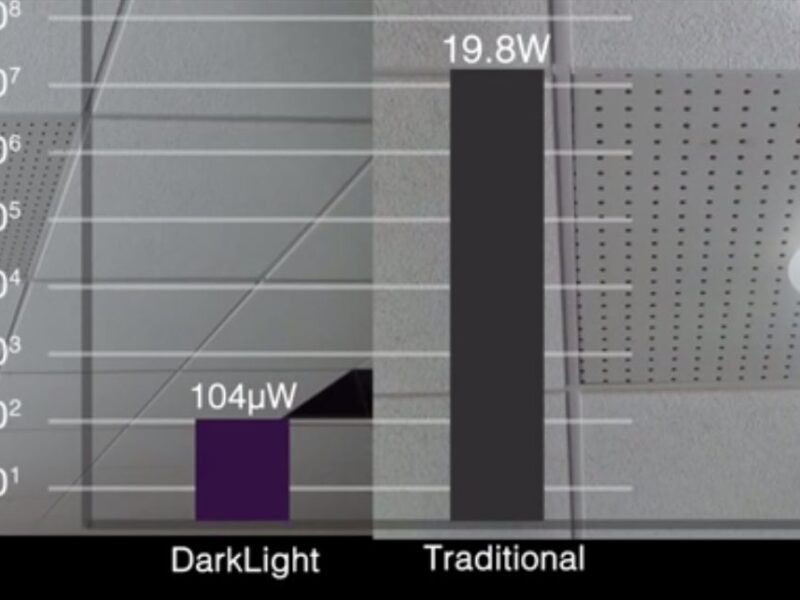
Communicating invisibly with dimmed down visible light
The idea is to make the most of VLC even in daylight when indoor lighting would typically be turned off. What’s more, mobile users relying on VLC see how shining light to a receiver can drain their batteries. Using off-the-shelf, low-cost LEDs and photodiodes, the researchers came up with novel data encoding and LED driving schemes they presented in a paper, “The DarkLight Rises: Visible Light Communication in the Dark”
They had to tackle various challenges, such as designing an effective driving circuit that would react sufficiently fast (in nanoseconds) for minimal delay and to boost the gain of low cost photodiodes (for improved communication distance). They also optimized a lightweight modulation scheme to maximize the number of bits encoded within the ultra-low LED duty cycle and developed a robust demodulation scheme to reliably extract the bits from the light pulses.
“DarkLight”, as they call this invisible VLC implementation, achieves 1.6kbps data rate and supports up to 1.8m of communication distance while drastically reducing the power consumption of the LED front end from 19.8W to 104mW. They achieved that with 500ns light pulses and a LED duty cycle of only 0.007%, making the DarkLight LED indistinguishable from a LED in the “off” state.
They say DarkLight broadens the applicable scenario of VLC, as it could just be a special mode that a VLC link could seamlessly switch to, whenever perceptible light beams are not desired (in a sunny day or even at night when one would want to connect discreetly). This mode would allow light-based communication to be always-on, regardless of the actual light luminance.
Interestingly, DarkLight also adapts its LED duty cycle based on the ambient light, so that it can run at the maximum LED duty cycle while keeping its luminance imperceptible to human eyes (it uses look up tables based on an extensive study on user perception).
The researchers also looked at how a receiver could decode bits from light pulses emitted by multiple LEDs simultaneously, differentiating multiple simultaneous bit streams from different LEDs based on the fact that each LED has its own set of time slots for data encoding.
Next, the researchers hope to boost DarkLight’s data rate and range, exploring higher-end LEDs and photodiodes to figure out DarkLight’s ultimate limit. They may even consider more advanced driving circuit designs such as pulse shaping techniques to generate shorter and higher light pulses. The novel VLC encoding scheme could also be applied to IR, to lower IR energy for eye safety and this is also something they will be investigating.
Visit Dartmouth College at www.cs.dartmouth.edu
Related articles:
Networking consumer-grade LED lights for IoT connectivity and localization
VLC market to nearly double every year, says Global Market Insights
Disney adds position finding to visible light communications
PureLiFi raises funds, refreshes management
 If you enjoyed this article, you will like the following ones: don't miss them by subscribing to :
eeNews on Google News
If you enjoyed this article, you will like the following ones: don't miss them by subscribing to :
eeNews on Google News



